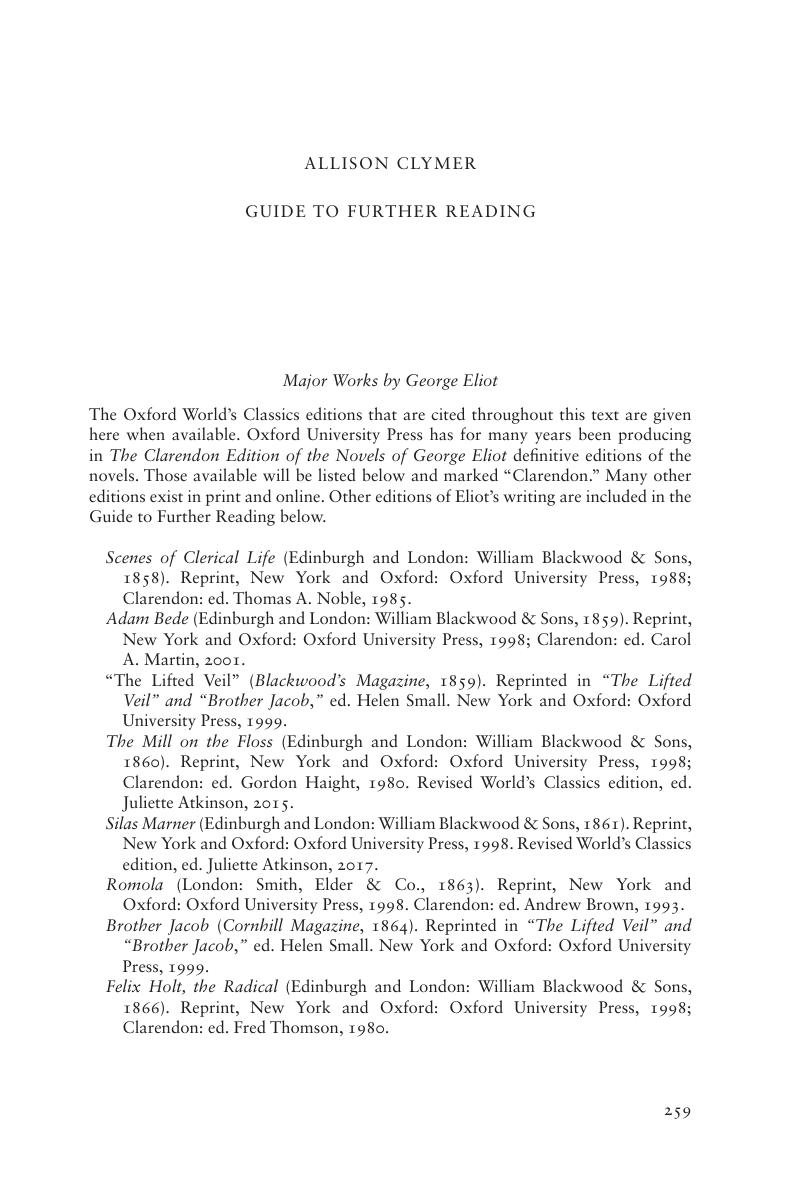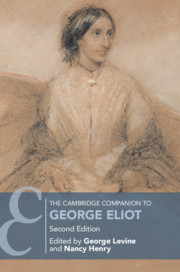Book contents
- The Cambridge Companion to George Eliot
- The Cambridge Companion to George Eliot
- Copyright page
- Dedication
- Contents
- Notes on Contributors
- Chronology
- Texts and Abbreviations
- 1 Introduction: George Eliot and the Art of Realism
- 2 A Woman of Many Names
- 3 Marian Evans’s Journalism
- 4 George Eliot and Her Publishers
- 5 The Early Novels
- 6 The Later Novels
- 7 George Eliot and Money
- 8 George Eliot and Gender
- 9 George Eliot and Politics
- 10 George Eliot and Science
- 11 George Eliot and Religion
- 12 George Eliot and Philosophy
- 13 George Eliot’s Reputation
- Guide to Further Reading
- Index
- Cambridge Companions to …
- References
Guide to Further Reading
Published online by Cambridge University Press: 25 January 2019
- The Cambridge Companion to George Eliot
- The Cambridge Companion to George Eliot
- Copyright page
- Dedication
- Contents
- Notes on Contributors
- Chronology
- Texts and Abbreviations
- 1 Introduction: George Eliot and the Art of Realism
- 2 A Woman of Many Names
- 3 Marian Evans’s Journalism
- 4 George Eliot and Her Publishers
- 5 The Early Novels
- 6 The Later Novels
- 7 George Eliot and Money
- 8 George Eliot and Gender
- 9 George Eliot and Politics
- 10 George Eliot and Science
- 11 George Eliot and Religion
- 12 George Eliot and Philosophy
- 13 George Eliot’s Reputation
- Guide to Further Reading
- Index
- Cambridge Companions to …
- References
Summary

- Type
- Chapter
- Information
- The Cambridge Companion to George Eliot , pp. 259 - 274Publisher: Cambridge University PressPrint publication year: 2019
References
Primary Sources
Secondary Sources
- 1
- Cited by



